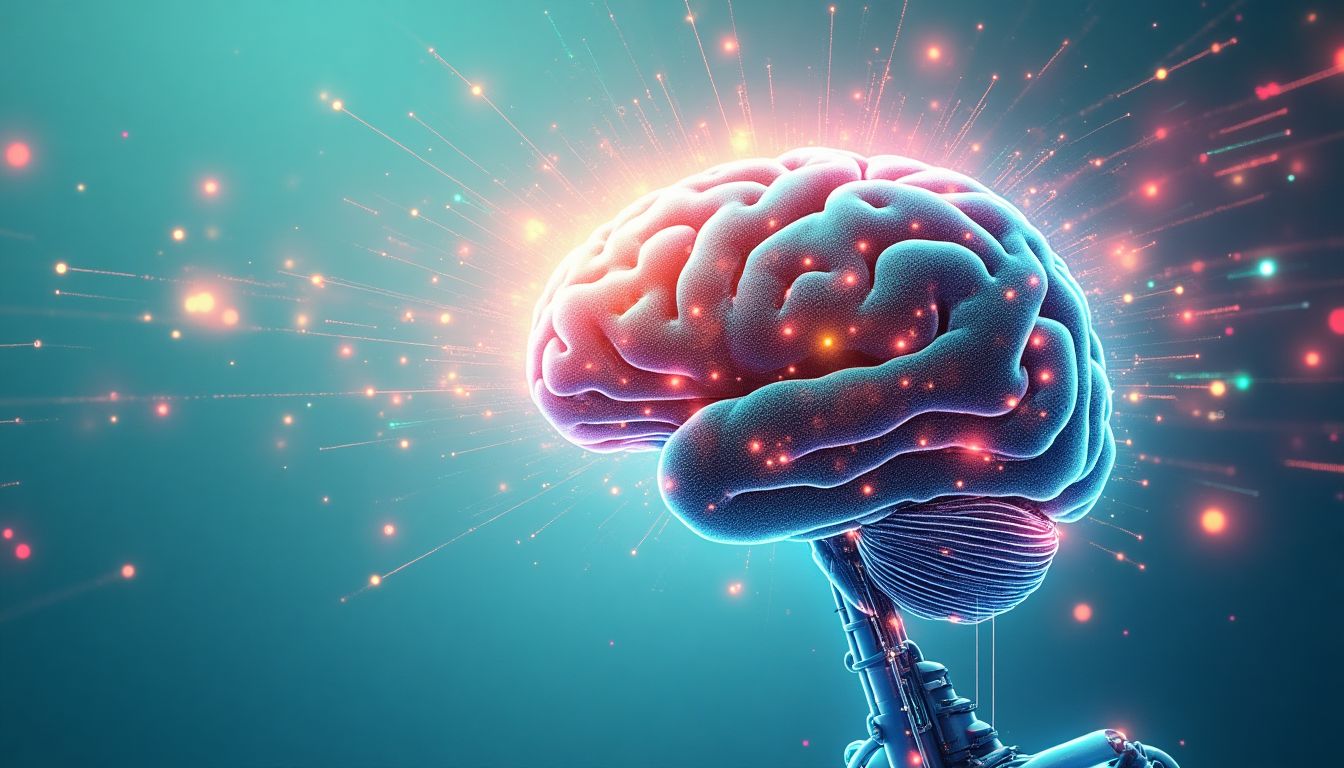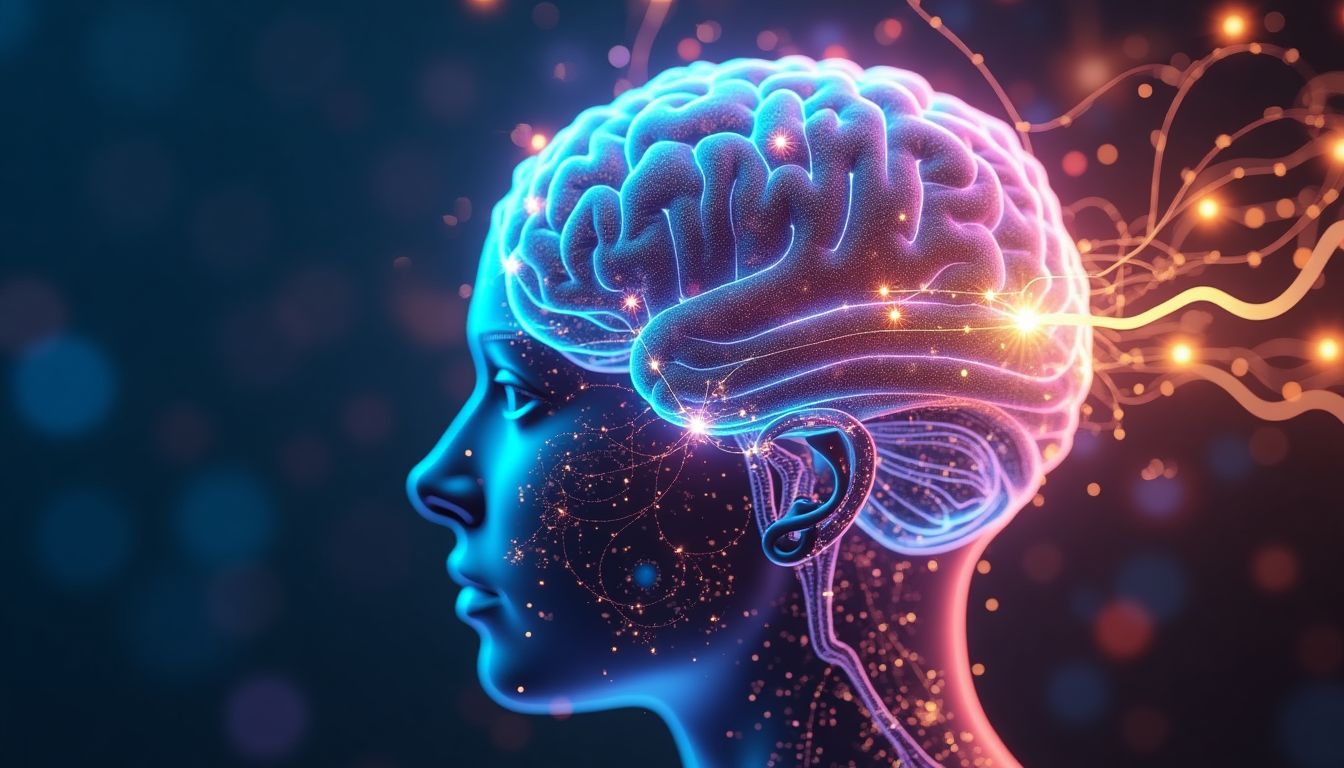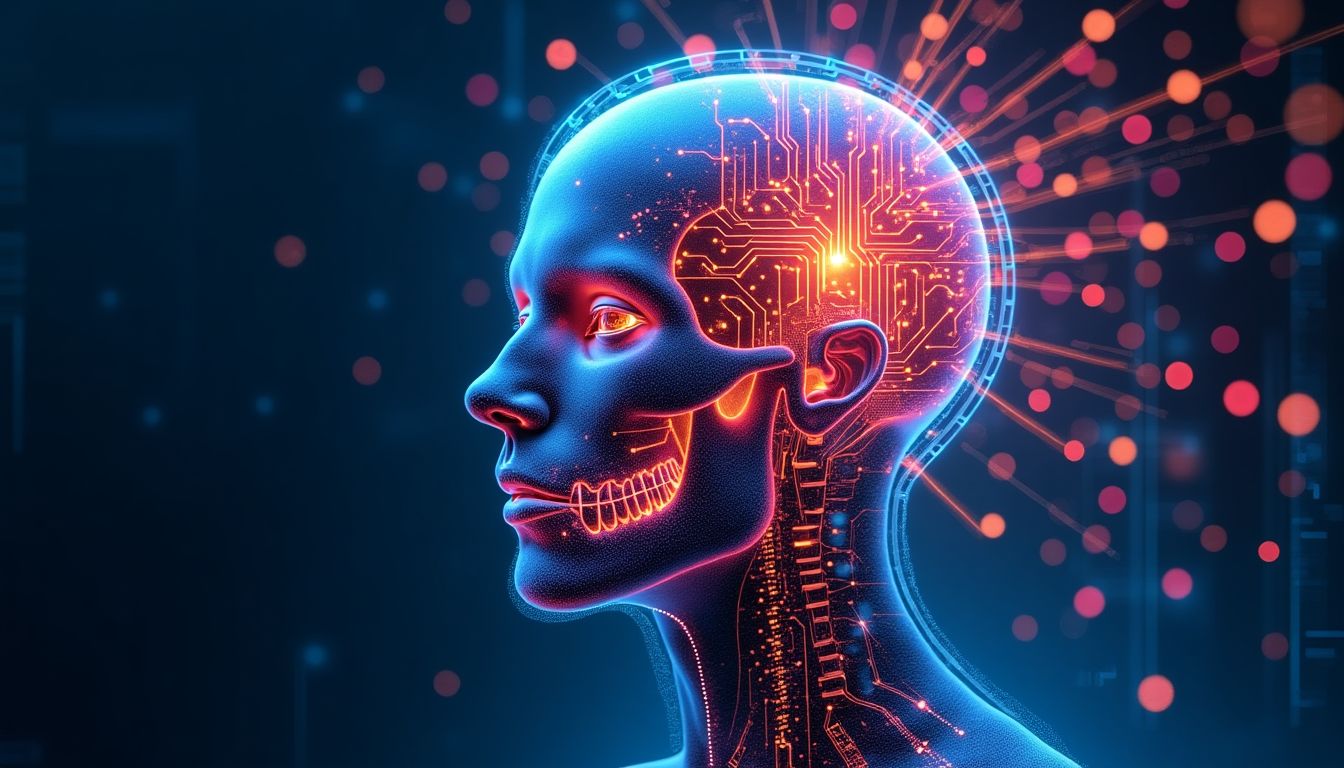Introduction: When Gears Turn in Your Head
The mind is a wonderful servant but a terrible master. - Robin S. Sharma. This saying resonates deeply in a world increasingly intertwined with technology. The minds of today are teetering on the edge of an evolution, aided by machines that not only serve us but have the potential to enhance our very cognition. We’re at a crossroads, where technology can’t just boost our abilities like a good cup of coffee; it could turn our brains into super-computers, elevating our intelligence to new heights. If our mental potential is a vast, uncharted wilderness, brain-machine interfaces (BMIs) might just be the key to exploring its deepest secrets.
Have you ever wondered what it would be like to have the intellectual prowess that rivals the likes of Albert Einstein? Or to experience creative thinking and memory recall like never before? As we scramble to keep pace with the rapid advances in this fascinating field, we need to dig deeper into the implications of merging our minds with machines. Are we on the brink of unlocking abilities that could allow us to surpass great thinkers, or is this a slippery slope into a world of unintended consequences?
Enter the world of brain-machine interfaces, where the boundaries of human cognition blur and redefine what it means to be ‘smart’. Authors like Michio Kaku, researchers like Elon Musk, and popular scientists such as Neil deGrasse Tyson have all painted vivid portraits of a future where our brains could be complemented, if not enhanced, by technology. The stakes are high, and as we delve deeper, the question becomes: what does it mean for humanity when machines make us smarter than ever before?
1. The State of Brain-Machine Interfaces Today
The world of BMIs is growing faster than a kid chasing an ice cream truck on a hot summer day. So, what technologies and research are currently leading the charge?
1.1 Overview of current technologies and research in BMIs
Companies like Neuralink are at the forefront of experimenting with advanced brain interfaces. Founded by Elon Musk, Neuralink aims to create devices that can connect the human brain with computers. This exploration isn’t just blue-sky dreaming; it’s grounded in hard science and rigorous testing. Meanwhile, initiatives funded by DARPA (Defense Advanced Research Projects Agency) are exploring similarly ambitious enhancements, looking at everything from paralysis recovery to improved memory.
1.2 Analysis of recent studies showcasing successful applications in memory enhancement and cognitive rehabilitation
Recent studies have shown promising results where BMIs are used to enhance memory and cognitive function in patients suffering from conditions such as Alzheimer's or traumatic brain injuries. These applications are not just science fiction; they are real-life advancements making significant differences. For instance, researchers detailed a study published in the *Journal of Neural Engineering*, highlighting how stimulating specific brain regions can restore memory recall in patients – talk about a brain reboot! The data speaks volumes and shows that with the right tech, we might just take our intellect beyond its natural limits.
2. The Science Behind Cognitive Augmentation
Understanding the brain is like trying to read a best-selling novel with the pages stuck together—complex and a bit frustrating! But when we dig deeper into neuroscience, we uncover some amazing insights about memory, intelligence, and creativity.
2.1 The Neuroscience of Memory, Intelligence, and Creativity
Memory is like a filing cabinet in your brain—full of drawers and compartments where you stash your thoughts, ideas, and experiences. Some folks have an overflowing cabinet while others struggle to remember where they put their keys. Researchers from the Harvard Medical School have been exploring how our brains store and retrieve information. They found that engaging in stimulating activities can actually boost our memory. So, if you want to remember where you parked your car—try solving a Sudoku puzzle!
Intelligence, on the other hand, comes in many flavors—think of it like ice cream. There’s vanilla (logical reasoning), chocolate (creative problem-solving), and strawberry (social intelligence). Studies show that the blending of these types produces a rich brain smoothie that enhances overall brain function, paving the way for creativity and innovative thinking.
2.2 How BMIs Interact with Cognitive Processes
Now, let’s sprinkle a little magic dust on this! Enter brain-machine interfaces (BMIs). These genius devices act as bridges between our thinking minds and machines, allowing us to interact in ways previously reserved for superhero movies! BMIs can tap into neuroplasticity, the brain’s ability to reorganize itself, to improve memory and cognitive skills. It’s like getting a brain upgrade without the need for a new operating system!
According to Neuroscience News, BMIs have been shown to enhance memory transfer and cognitive training. Imagine downloading new knowledge directly into your brain—now wouldn’t that be a sweet deal? Who needs Netflix when you can binge on knowledge?
3. The Potential Benefits of Cyborg Intelligence
If being smart were a sport, cyborg intelligence could award you Olympic gold, silver, and bronze medals! The benefits of enhanced brainpower through BMIs are endless, from impressive IQ scores to newfound creativity that could rival Picasso on a good day.
3.1 Quantitative Advantages
Let’s get down to the numbers! Studies indicate that individuals using BMIs could experience a spike in IQ levels. Research from MIT suggests that enhanced cognitive abilities could lead to a higher average IQ, potentially increasing by 10 to 20 points. Cue the confetti!
Memory capacity could also grow—that “I forgot my anniversary” scenario might become a thing of the past. Imagine not only remembering your anniversary but also recalling every special moment from your relationship. With BMI technology, we could become memory geniuses, retaining information better than a human calculator.
3.2 Qualitative Aspects
But it’s not just about numbers! Emotional intelligence is another treasure that could benefit from cyborg brain enhancements. We often think about how smart someone is, but emotional savvy matters too. Using BMIs can help us boost our empathy, awareness, and understanding of others, making us instant relationship gurus!
Moreover, ethical considerations will need careful thought. Enhancing intelligence might raise questions about what “normal” really is. Are we still human if we become super-intelligent? This could spark intense debates about fairness, competition, and what it means to be ‘human.’ The world could become a bit more like a sci-fi movie, and trust me, the social drama will be some popcorn-worthy entertainment!
4. Risks and Ethical Concerns
As thrilling as the prospect of cyborg intelligence is, it's vital to recognize the potential dark clouds hanging over this technological marvel. With great innovation comes responsibility, and understanding the risks is key to navigating this landscape.
4.1 Examination of Potential Risks
While brain-machine interfaces (BMIs) may sound like a doorway to a utopian future, they also carry specific risks. Here’s a summary of the most concerning threats:
- Hacking: Just like your computer, BMIs could be hacked. Imagine someone taking over your thoughts!
- Privacy Concerns: If our brains are connected to the internet, does that mean our thoughts might be shared too? It raises an eyebrow about what remains private.
- Socioeconomic Impacts: If only the wealthy can afford cognitive enhancements, society risks creating an even larger divide between the “haves” and “have-nots.”
4.2 Ethical Dilemmas
Aside from risks, there are ethical questions that we must explore. These questions can feel like tangled skeins of wool, and unraveling them is crucial:
- Definition of 'Normal' Intelligence: If technology enhances intelligence, what does that mean for those who don’t have access? Who decides what "normal" is?
- The Morality of Enhancement: Should humans play God? Where do we draw the line between natural evolution and artificial enhancement?
- Implications for Society: If we can all become super-smart, how will that affect our relationships and communities? Will empathy take a backseat to IQ?
5. Future Implications of Cyborg Intelligence
As we plunge deeper into the future, the implications of widespread use of brain-machine interfaces loom large. Will our society build a grandiose system, or will it be a shaky tower destined to fall?
5.1 Projections on How Society Might Evolve
Imagine a world where every mind is connected and enhanced. In such a society, we might see:
- Enhanced Collaboration: With augmented intelligence, teams could work on projects with unprecedented creativity and efficiency. The workplace could feel like a well-oiled machine.
- New Forms of Art and Expression: Artists may use BMIs to push the boundaries of creativity, blending technology and human thought to create mind-blowing masterpieces.
- Learning Opportunities: Education could transform into an immersive experience. Imagine students downloading knowledge directly into their brains – the dull textbooks could become a relic of the past!
5.2 Discussion of Cultural, Educational, and Workplace Transformations
Here's a deeper look into how the cultural landscape might reshape itself with the advent of cyborg intelligence:
| Aspect | Traditional Model | Cyborg Model |
|---|---|---|
| Culture | Limited by individual creativity and resources | Collective intelligence and creativity amplified |
| Education | Textbook-oriented, slow learning process | Real-time knowledge transfer, highly customizable |
| Workplace | Human limitations dictate performance | Enhanced productivity, efficiency, and creativity |
These transformations could signify not just changes in how we communicate but also in our values and ways of living. Perhaps we will embrace collective intelligence as the greatest human achievement!
6. AI Solutions: How Can AI Tackle Cognitive Enhancement Through BMIs?
When we imagine a world where brain-machine interfaces (BMIs) elevate human cognition, we can't overlook the central role artificial intelligence (AI) will play in this fascinating journey. By harnessing AI's immense capabilities, we can systematically explore and maximize the potential benefits of BMIs for enhancing intelligence. Let's map out this approach.
6.1 Research Existing Literature
Our first task is to build a sturdy foundation. An extensive literature review on the relationship between AI and neuroscience is vital. This research will help us understand the current landscape of BMIs and cognitive enhancement. We’ll study influential entities like Neuroscience.com and bioRxiv for updated studies to ensure our exploration is rooted in verifiable data.
6.2 Develop Optimized Algorithms
This step encompasses the birth of innovative software. The team will craft algorithms that adapt to users' unique cognitive processes, enhancing memory retention and intelligence. Using machine learning, AI can identify behavioral patterns that contribute to personal learning styles, leading to individualized cognitive enhancement strategies that align human interaction with technology.
6.3 Ethical Collaboration with Neuroscientists
While diving headfirst into AI solutions, collaboration with neuroscientists is paramount. We must ensure ethical compliance and address moral dilemmas surrounding cognitive enhancement head-on. As we work alongside experts in institutions like Harvard University, we can navigate the intricate ethical waters surrounding the intersection of AI and human cognition.
6.4 Testing and Development Phases
Employing various testing methods is crucial; experimenting with both control groups and augmented participants can offer insights. We’ll conduct field tests to monitor cognitive performance while creating benchmarks for memory and intelligence. Feedback loops will be established to refine algorithms and enhance user experience continually.
Actions Schedule/Roadmap (Day 1 to Year 2)
Day 1: Inaugural meeting with a diverse group of neuroscientists, AI researchers, and policymakers to discuss goals and ethical frameworks.
Week 1: Form specialized sub-teams (AI Developers, Neuroscientists, Ethics Committee) and begin laying out a comprehensive research plan.
Month 1: Initiate a literature review, collecting data from experts at institutions such as MIT and Stanford University to assess the current state of BMIs and AI.
Month 3: Conduct the first round of workshops where neuroscientists explain cognitive processes while AI developers share algorithm development details with the team.
Month 6: Finalize the first draft of algorithms focusing on memory retention enhancement and initiate preliminary testing on select participants.
Year 1: Evaluate the intermediate results from participants. All sub-teams will regroup and assess progress. Are the algorithms working? Is cognitive performance improving?
Year 2: Transition to broader testing; initiate collaboration with external institutions such as NASA or WHO to globally implement cognitive enhancement programs.
By the end of Year 2, consolidate findings and results into a comprehensive report, showcasing progress, ethical considerations, and the implications for wider societal adaptation of BMIs powered by AI.
Conclusion: Embracing the Potential of Cyborg Intelligence
As we catalyze the age of brain-machine interfaces coupled with artificial intelligence, we find ourselves at an unprecedented point in human evolution. Imagine a world where learning is instantaneous, creativity is boundless, and human interaction transcends the limits of the traditional mind. But amid this bright future, we must wield ethical considerations like a sword, mindful of the responsibilities that accompany our technological prowess.
This potential infusion of AI with augmented cognition provides a tantalizing glimpse into a future ripe with hope and discovery, but it also throws into question our sense of identity and humanity. What does it mean to be intelligent? Will the pursuit of augmentation lead to the erosion of our core qualities, or will it empower us to evolve into a new era of understanding? These questions must resonate as we progress into a world that is influenced by both humanity and technology in a harmonious dance. As we stride forward, it’s essential to safeguard the essence of our being while pursuing innovation and expansion. Are we ready to take this leap together?
FAQ
Q1: What are brain-machine interfaces?
A1: Brain-machine interfaces (BMIs) are systems that let your brain talk to devices directly. Imagine controlling a computer or a robotic arm just by thinking about it! These devices can help people with disabilities, making everyday tasks easier. For example, Neuralink is a company working on BMIs that could help restore movement in paralyzed individuals.
Q2: How do brain-machine interfaces actually work?
A2: BMIs work by picking up electrical signals from your brain. These signals are then decoded and turned into commands for machines. Think of it like a translator converting your thoughts into actions. Researchers use tiny implants or non-invasive methods to get these signals. Today, scientists at places like DARPA are exploring various technologies to make this communication smoother.
Q3: What are the benefits of using BMIs?
A3: There are many potential benefits of using BMIs:
- Improved mobility for individuals with disabilities.
- Enhanced cognitive functions, such as memory and problem-solving.
- New ways to learn and process information quickly.
These advantages could change the way we interact with technology. Imagine learning a new language in a week or remembering everything you read!
Q4: What are the risks associated with BMIs?
A4: While BMIs have exciting potential, there are also risks to consider:
- Privacy issues: Who has access to your thoughts?
- Cognitive hacking: What if someone hacks your mind like they hack a computer?
- Social inequality: Will only wealthy people access these technologies?
These concerns highlight the importance of ethical discussions around the development and use of BMIs.
Q5: Are there ethical concerns with brain-machine interfaces?
A5: Yes, there are several ethical issues to think about:
- What does “normal” intelligence mean if some people can enhance their brains?
- Should we allow enhancements that could create a divide in society?
- How do we ensure that everyone has access to these technologies?
These questions encourage deep conversations about how we want to shape our future with BMIs. Places like NCBI often conduct studies on these topics, providing valuable insights into ethical considerations.
Q6: How might Artificial Intelligence play a role in enhancing cognition with BMIs?
A6: Artificial Intelligence (AI) can help personalizing how BMIs work for each person. For instance, AI could analyze how you learn best and create tailored methods to boost your memory. Together, AI and BMIs could lead to groundbreaking advancements in education and mental health, creating a future where everyone can reach their full potential.
Q7: What can we expect in the future with brain-machine interfaces?
A7: The future is bright! As technology keeps evolving, we might see:
- Widespread use of BMIs in education, helping students learn at phenomenal rates.
- More people living independently with disabilities thanks to enhanced mobility.
- New career opportunities in fields like technology, healthcare, and education.
Ultimately, the integration of BMIs into our lives may not just enhance human capabilities, but could reshape societal norms and expectations.
Wait! There's more...check out our gripping short story that continues the journey: The Last Gamble
Disclaimer: This article may contain affiliate links. If you click on these links and make a purchase, we may receive a commission at no additional cost to you. Our recommendations and reviews are always independent and objective, aiming to provide you with the best information and resources.
Get Exclusive Stories, Photos, Art & Offers - Subscribe Today!





























1 comment